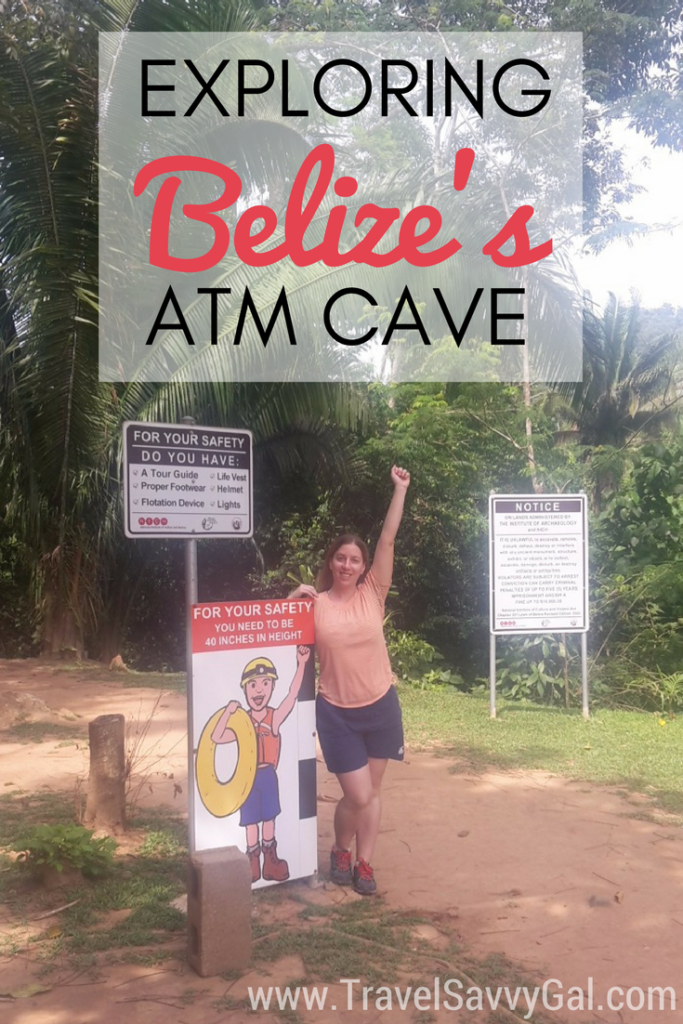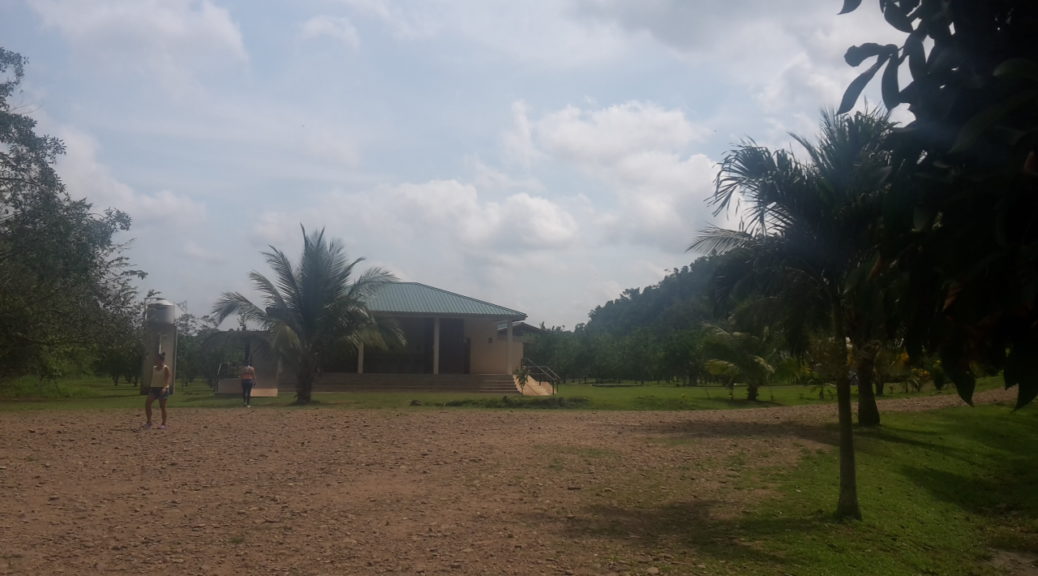
Exploring Belize’s ATM Cave, a Mayan Archaeological Wonder
I’m in a cave mostly engulfed in darkness, swimming. The water is cool, but I’ve just nearly become acclimated to the chill. I’ve hit a rhythm with my strokes, despite being in clothes and shoes as I chug along, weighed down ever so slightly.
And then I see it. An outcropping of rock nearly touching the surface of the water, not leaving much space to squeeze through with my head above water. I’m petite, so I feel like I can turn myself sideways and lift my chin, and just make my way through.
Until I remember that I’m wearing a helmet with a protruding headlamp. There’s no way I’ll fit in the tiny gap of air with my head above water.
So I take a deep inhale, dive head-first under the water and give a sharp kick to propel myself forward, trusting on sheer faith that I’ll emerge at the surface on the other side, to take another breath.
For some, I might have described your worst nightmare, however in Belize it is just another routine day exploring the ATM Cave. And while I really didn’t have much of an idea exactly what I was signing up for, there is such rich history and adventure that when I’ve encountered other travelers who have been to Belize, inevitably they all ask, “Did you make it to the ATM Cave?”
Signing Up for the ATM Cave Tour
San Ignacio, a Belizean town in the west of the country, close to the Guatemalan border, was my first stop when I arrived in Belize and served as a home base for my first five nights. Arriving mid-afternoon, I strolled around town to get my bearings, scope out nearby restaurants, and speak to a few tour providers about options for the next day.
Everyone I spoke with said the same thing when asked which day trip was best: an excursion to the ATM Cave. As a solo traveler, and with most tours having a 2-person minimum, I was limited to tours that others had already reserved. But fortunately there is one tour that nearly every provider runs daily – the one to the ATM Cave.
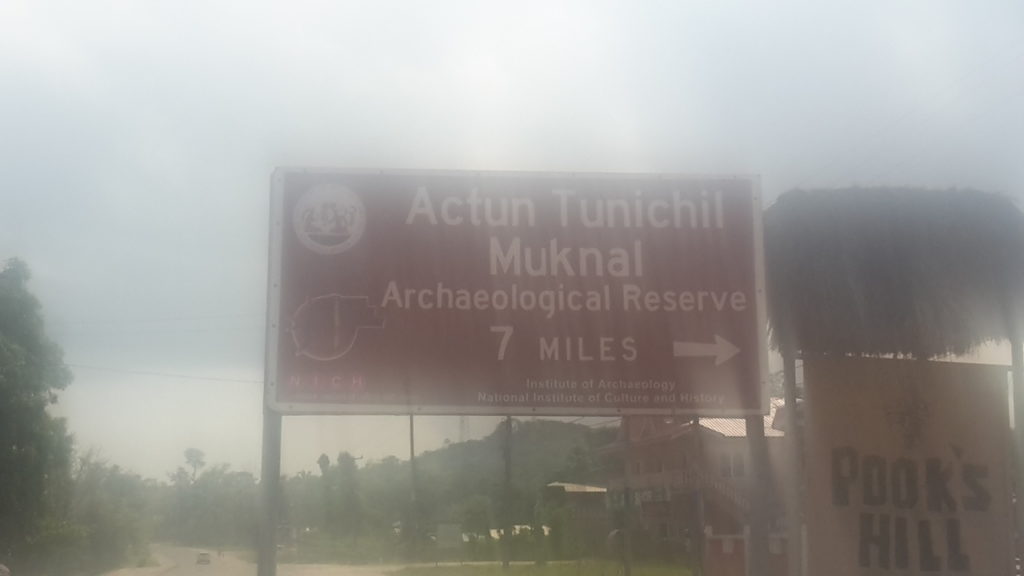
Don’t confuse ATM with that darling machine that dispenses cash, in this case it stands for the Mayan name of the archaeological burial site, Achtun Tunichil Muknal. Let’s just say that I was pretty convinced by this point, and signed up for an all-day tour departing the next morning.
When you go, I can’t recommend Francisco of Mayawalk Tours enough for a visit to the ATM Cave, be sure you visit with him! (Not sponsored, he is just really fabulous.)
Other than what to pack, I didn’t really ask many questions, and in my head simply expected it to be like other caving and spelunking I’ve done.
I knew my shoes would get wet (or I had the option of borrowing enclosed water shoes), to wear a bathing suit, & to bring a change of clothes, which all sounded to me like pretty standard for a caving trip that would involve some water. I had been in the water and mud in caves before, from my muddy experience on the spelunking tour of the Grotte di Frasassi in Le Marche, Italy and the occasional swimming section during a 7km underground tour of the Paradise Cave in Vietnam.
How different could this be?
Getting to the ATM Cave Entrance
Once the van arrives in the parking area just under an hour from San Ignacio, everyone off-loads and gets their gear together, as well as setting aside all valuables, phones, and cameras to be locked in the vehicle and left behind, watched by the driver. I got one last photo here at the entrance to the trail before parting ways with my technology:
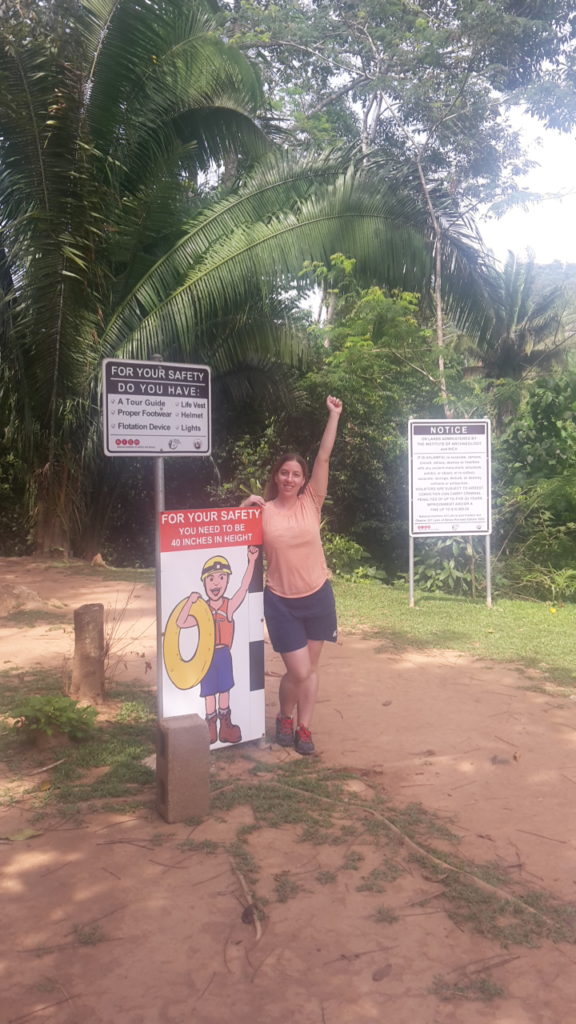
On the way to the drop-off spot though, the van had to cross a not inconsequential puddle mini-lake on the way – which should have been the first sign of what was to come. We hadn’t even arrived at the entrance, and already we were fording a decently-sized body of water.
Yes, I had been caving before. Yes, I knew there would be at least some swimming inside of the cave. But no, I did not realize exactly how much swimming would be involved even on the hike to get to the cave entrance!
Like several places in Belize, tour guides are required to enter the ATM Cave, so I fell in line with my guide and the rest of the group from the drop off point, and we started making our way to the cave. Within the first 10 minutes, the level of swimming started to become clear as we strolled up to a lake with a flimsy rope strung across.
I confidently started taking steps to walk through the water, straining my arm muscles to keep my water container lifted above the water’s surface. About a third of the way across, it became clear that this was a fool’s errand as my feet squished ever deeper into the mud at the bottom with each step and the chilly water continued to rise, soaking my bathing suit and clothes. I know when it’s time to surrender so I gave in and started to swim (fortunately with my impeccably sealed water bladder!) as the water bladder and the bag I was carrying it in became almost completely submerged.
Of course, as you pick up the trail on the far side of the water, you have just enough time to air dry in the tropical heat before you encounter – yep, you guessed it – the next section of water to cross. On the 40-minute hike from the parking area to the entrance, I definitely got my first taste of just how water-intensive my day at the ATM Cave would be.
Fortunately, right before the cave entrance there is a final pit stop (a few good looking trees, essentially) and hooks where you can leave your water bottle due to some of the tight spaces inside the cave. There’s one last preparation of getting a helmet with headlamp for the cave interior, and then off you go a tiny bit further on the path and down the steps toward the entrance.
And this is where the van experience – or at least the swimming sections along the approach where I emerged sopping wet – should have foreshadowed what comes next. How do you enter the cave? By swimming in, of course!
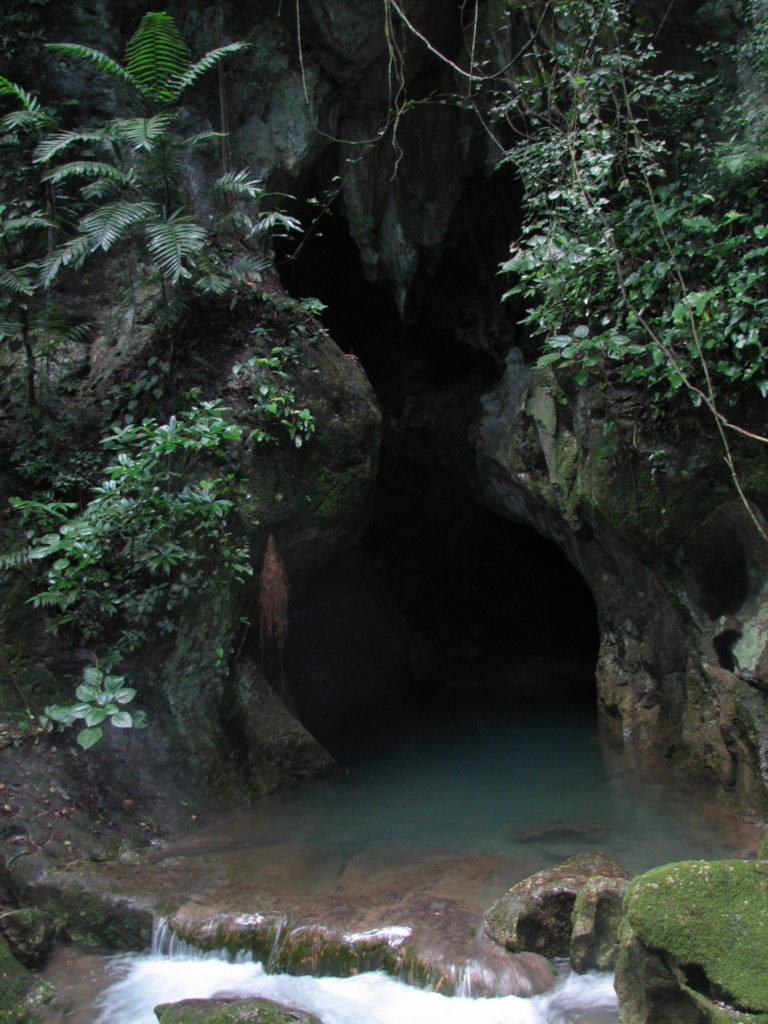
Inside the ATM Cave
So what’s with all this swimming, anyway? There are a lot of sections of the cave to explore. Some, like the ATM Cave entrance, are areas where you’ll swim. Others you’re merely wading in ankle-deep sections. And occasionally, as I mentioned at the beginning of the post, you’re up against a section that’s a tight squeeze and you plunge underwater between the rocks to get to the next section.
One of the things I didn’t expect? The water was chilly! And you’ll air dry in parts of the cave, which for me always made the next plunge into water requiring just a little bit more will power to enter. But what I love about travel is how it makes you push yourself to your limits – with the right motivation, of course.
Inside the long, meandering land and water pathway of the cave, there are rock surfaces etched out over thousands of years stretching up on either side. There are the typical stalactites and stalagmites you probably learned about in school, plus various other cave features like columns where the two have met each other and resemble a rippled tree trunk.
The ATM Cave is principally formed from limestone, so there are porous sections of the rock. Over time, as the water has forced its way through the nooks and crannies of the rock, the cave includes small sections and huge caverns depending on the water’s meandering path.
And the rock itself, beyond its growth and erosion over time, has a colorful story to tell. Throughout the journey we observed sparkling quartz, yellow sulfur deposits, shining black manganese, and distinctive swaths of red iron.
The retelling of the cave’s history and discovery weaves in with the different sections of the path through the cave, with areas where the light streamed in from overhead and other parts completely submerged in darkness and only illuminated by the glow of the headlamp.
The main attraction is an elevated section that boasts the Mayan relics and archaeological remains. Of course, the reward of experiencing this section of cave is only attained after overcoming a small trial.
There is a hill-shaped rock with different ridges, about 10 feet (or 3 meters) tall that you must climb to reach the coveted upper section of cave. I am an experienced rock climber, so this part was a breeze for me. But even with the wide range of ages and ability levels in my group, with a bit of coaching by our guide Francisco, we all made it to the top.
This is where you know the Belizeans are serious about preservation – everyone, guides included, toss their shoes by the wayside and proceed only with a pair of socks on to not cause too much damage to the site. There is a marked off path through the center, and wonders jutting out on either side.
What most people know about the ATM Cave is that it was the burial site (or relocation site) for Mayan skeletons over 1,000 years old. They are positioned in several different parts of this elevated section. Some skeletons are only partially exposed, with a part of a skull or fragment of bone protruding from the rock. You’ll pass small skeletons presumably of children and others that match with the small stature of a Mayan adult.
You’ll see the skull over a millenium old that was crushed by a tourist’s camera back in 2012, prompting the photography ban. And you’ll see what many consider the absolute highlight of a visit to the ATM cave, the “Crystal Maiden.”
It is definitely a young skeleton, and was thought for many years to be female, hence its name. Now it is believed that it might instead be a teenage male. According to the guides, most of the information about the gender of the skeleton interestingly enough comes from the assessment of various past visitors to the cave, including a doctor and an osteologist. In any case, the calcification of many centuries has led the skeleton to have the appearance of being encrusted in crystals:
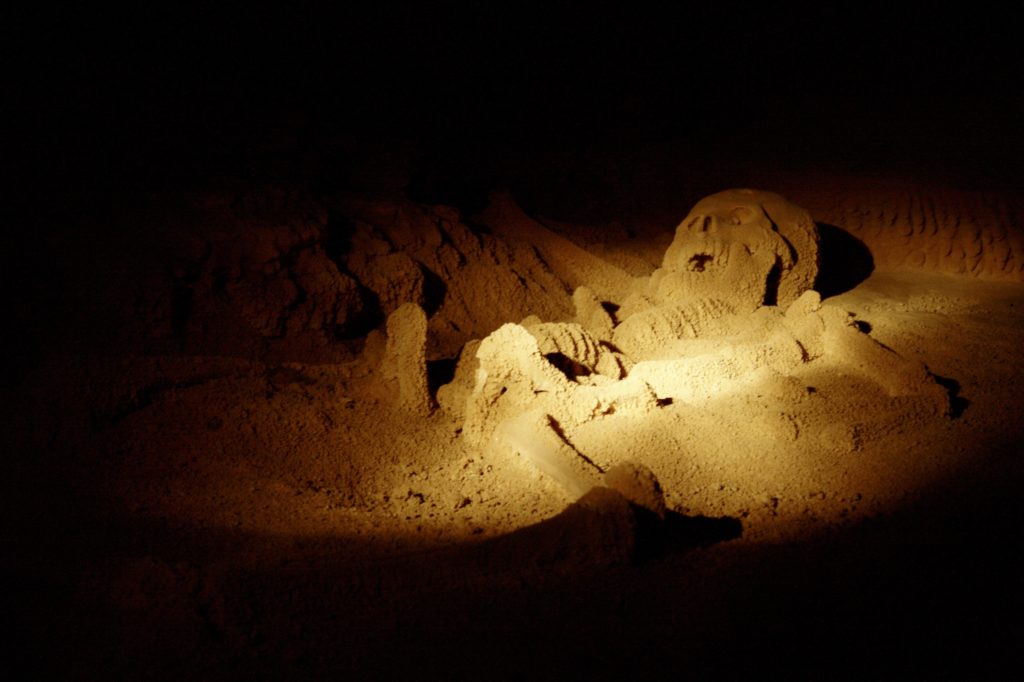
Another impressive Mayan relic is the pottery. These vessels supposedly made using the coil method, look nothing like the rudimentary coil vases I constructed in my high school art class. Also, none of the pottery inside the ATM Cave is completely intact. The Mayans deliberately left them with a section removed, to allow the spirit to escape.
And as the cave was seen as the Underworld, with the roots of the local Ceiba tree ultimately transporting the souls of the Mayan skeletons through Earth to Heaven, there are also pottery altars for blood-letting and sacrifice. And it is believed that there was often older royalty buried with a younger skeleton to aid them in escaping the Underworld.
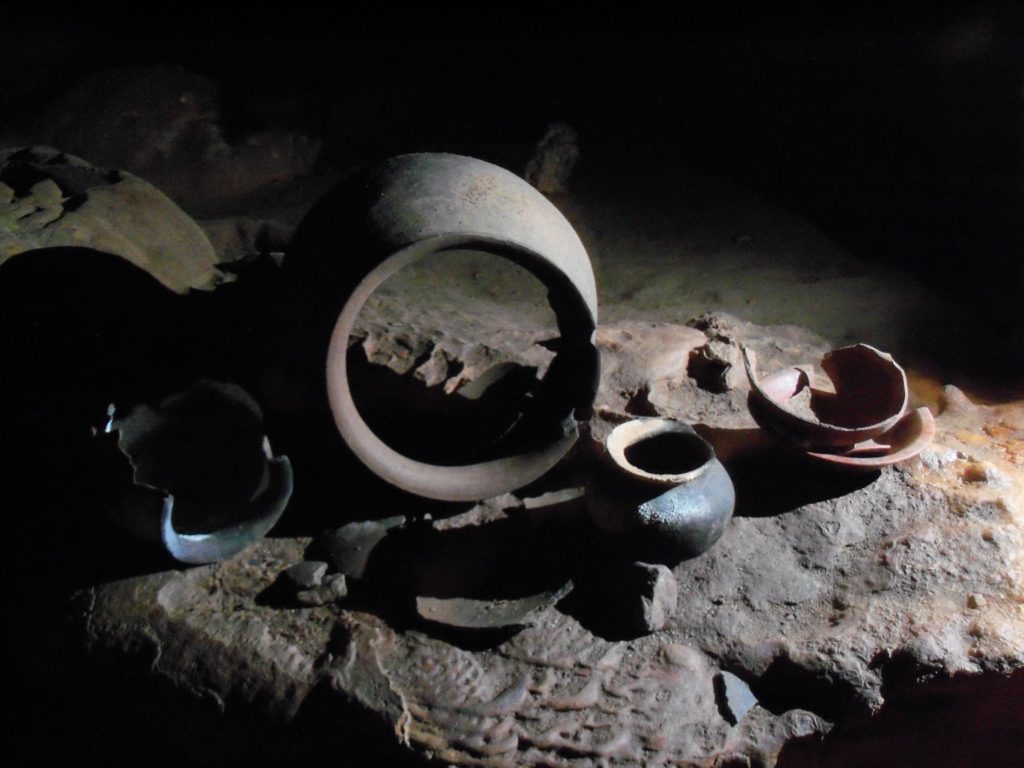
The souls of the Mayan skeletons are believed to have undergone quite the journey from the ATM Cave, and as a modern day visitor, I too, felt as if I had undergone a massive journey. One of adventure, caving, swimming, geology, and archaelogy, exploring the natural aspects of the cave and appreciating it for the significance it still holds for local Mayans.
It was seeing the rocks and formations of the cave, coupled with Mayan archaeological relics, along with the adventure of the swimming and climbing throughout the cave that really made this whole experience so incredible and memorable for me.
And now I understand why that first night in San Ignacio, Belize, this was the tour everyone couldn’t stop talking about.
Have you been caving before? Was your experience anything like Belize’s ATM Cave? Any other questions about what it’s like to visit? Let me know in the ‘Comments.’
Enjoyed this post? ‘Pin it’ to share on Pinterest & save for later!
